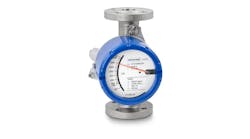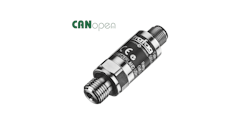Practicing engineering often entails trying to satisfy two seemingly conflicting requirements. Sometimes the conflicts cannot be resolved, but more often than not, some clever engineering can yield a solution that represents the best of both worlds. Such was the case with an application involving the fabrication of a custody-transfer orifice plate.
Replacing the orifice plates was one of the recommendations made in a report auditing a number of orifice plate custody-transfer installations. Manufacturing the orifice plate would seem to be straightforward because it can be fabricated using specifications in existing standards that are available from a number of sources.
Orifice-plate standards have smoothness requirements that result in an orifice plate that is relatively smooth to ensure the appropriate geometry of this physical aspect of the orifice plate is maintained. On the other hand, the user had an internal requirement that the equipment located in the piping required relatively rough surfaces. Investigation revealed that the source of this requirement was the user’s experience that equipment with relatively smooth surfaces tended to leak over time. Therefore, plant-wide specifications required rough surfaces to avoid leakage by the gasket.
The orifice-plate supplier was “pulling his hair out” regarding the smoothness of the orifice plate surface, because this meant he had to deal with conflicting requirements in the same device. In particular, standards require a smooth surface to achieve accurate measurement, while the plant (his customer) required a rough surface to avoid leakage.
These seemingly conflicting requirements were resolved after some initially frantic discussions. Once the facts were determined, it became clear that the orifice plate needed to be smooth for accurate measurement. Yet it also had to be rough to properly seal the piping. But the measurement occurs in the flowing fluid whereas the sealing occurs away from the flowing fluid, outside of the pipe per se.
It is important to recognize that the smooth and rough requirements apply to different parts of the orifice plate even though neither requirement explicitly states this. Manufacturing can then proceed by fabricating the entire orifice plate per the relatively smooth orifice-plate specifications. Afterwards, the part of the orifice plate that is not used for measurement (the non-wetted annular area located outside of the inside diameter of the pipe) can be made rough, so as to meet the sealing requirement of the gasket.
It took a little convincing, but the orifice plate was eventually fabricated to meet both seemingly conflicting requirements.
David W. Spitzer, P.E., is a regular contributor to Flow Control. He has more than 30 years of experience in specifying, building, installing, startup, and troubleshooting process control instrumentation. He has developed and taught seminars for over 20 years and is a member of ISA and belongs to the ASME MFC and ISO TC30 committees. Mr. Spitzer has written a number of books concerning the application and use of fluid handling technology, including the popular “Consumer Guide” series, which compares flowmeters by supplier. Mr. Spitzer is currently a principal in Spitzer and Boyes LLC, offering engineering, product development, marketing, and distribution consulting for manufacturing and automation companies. He can be reached at 845 623-1830.
www.spitzerandboyes.com

